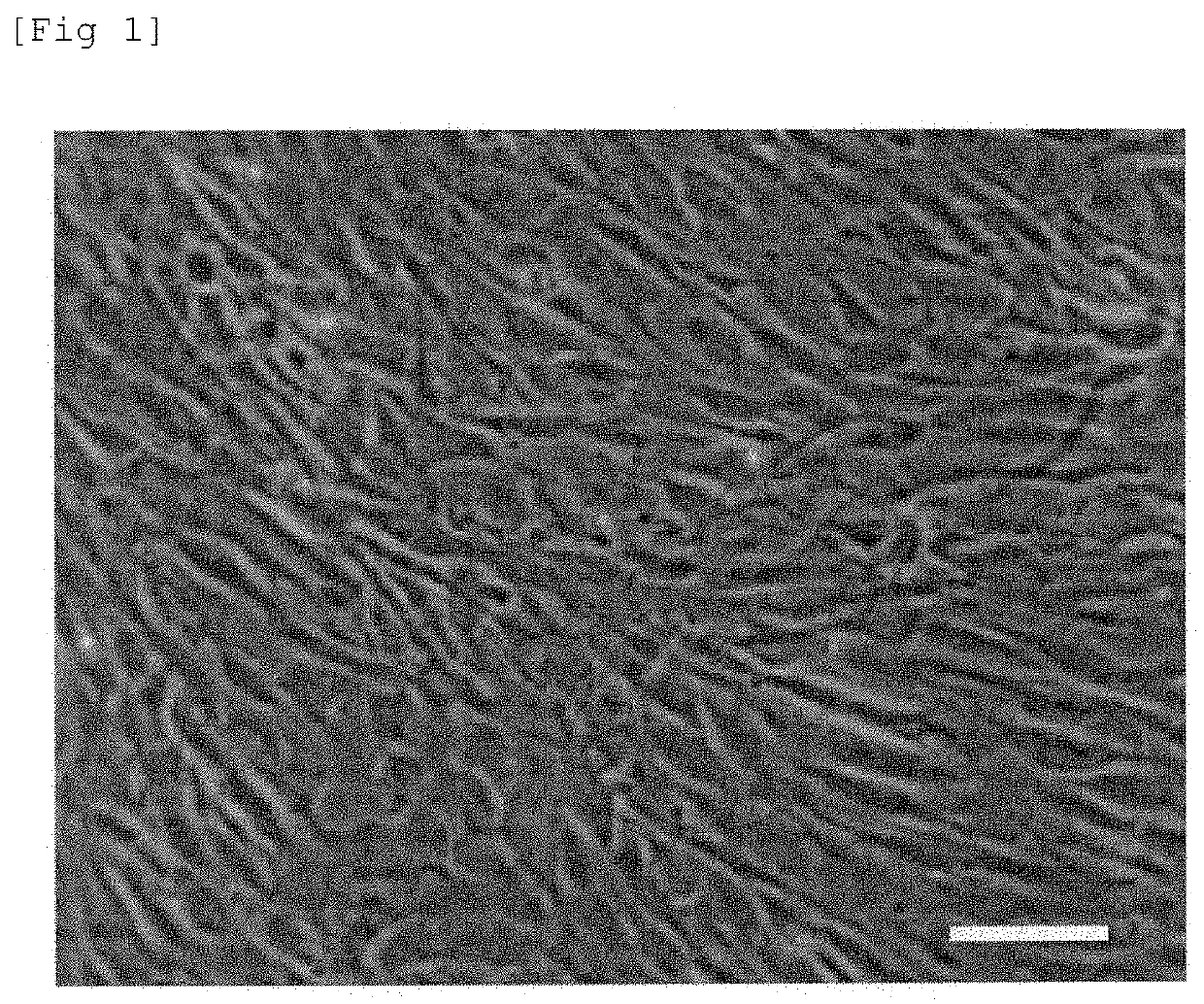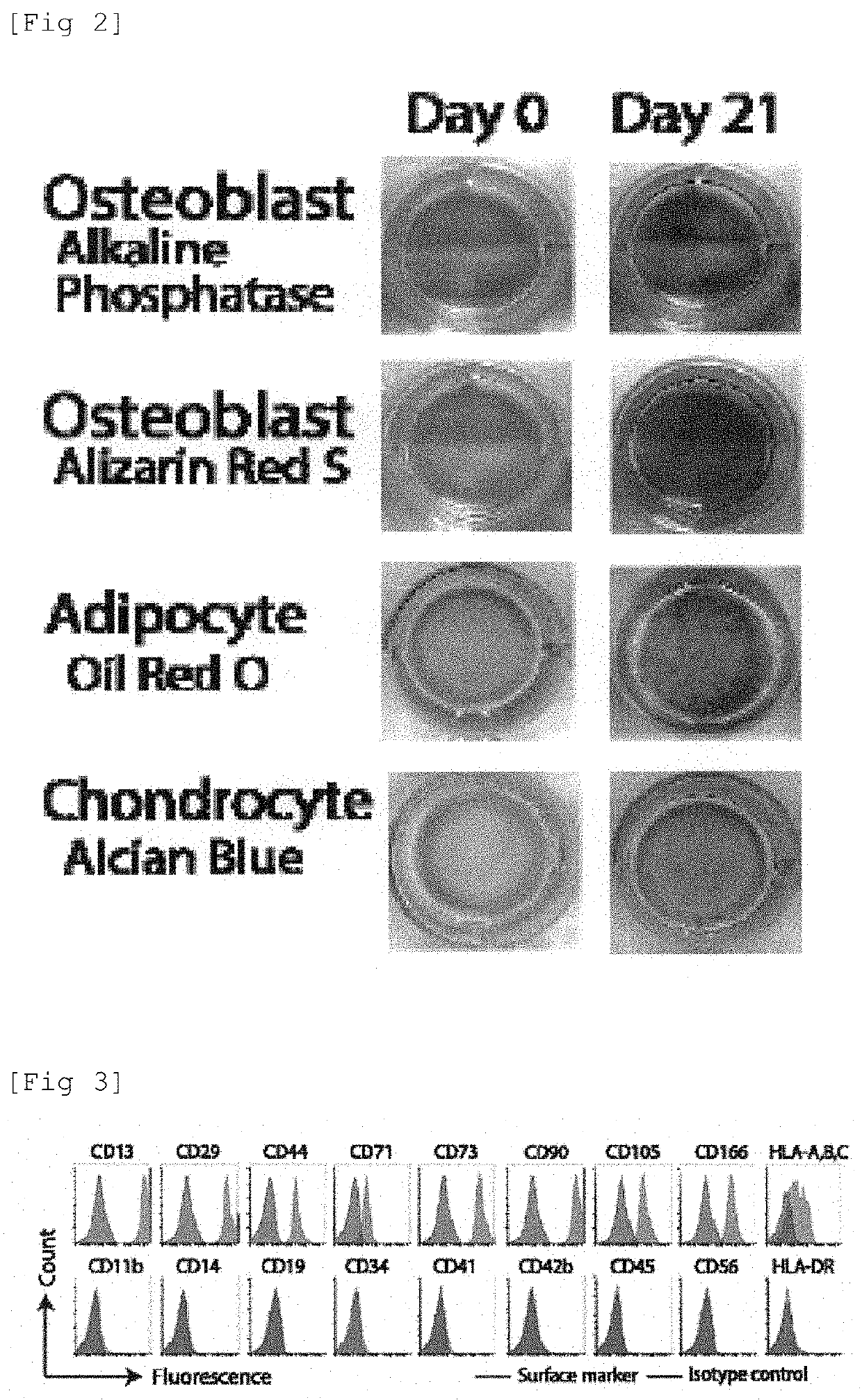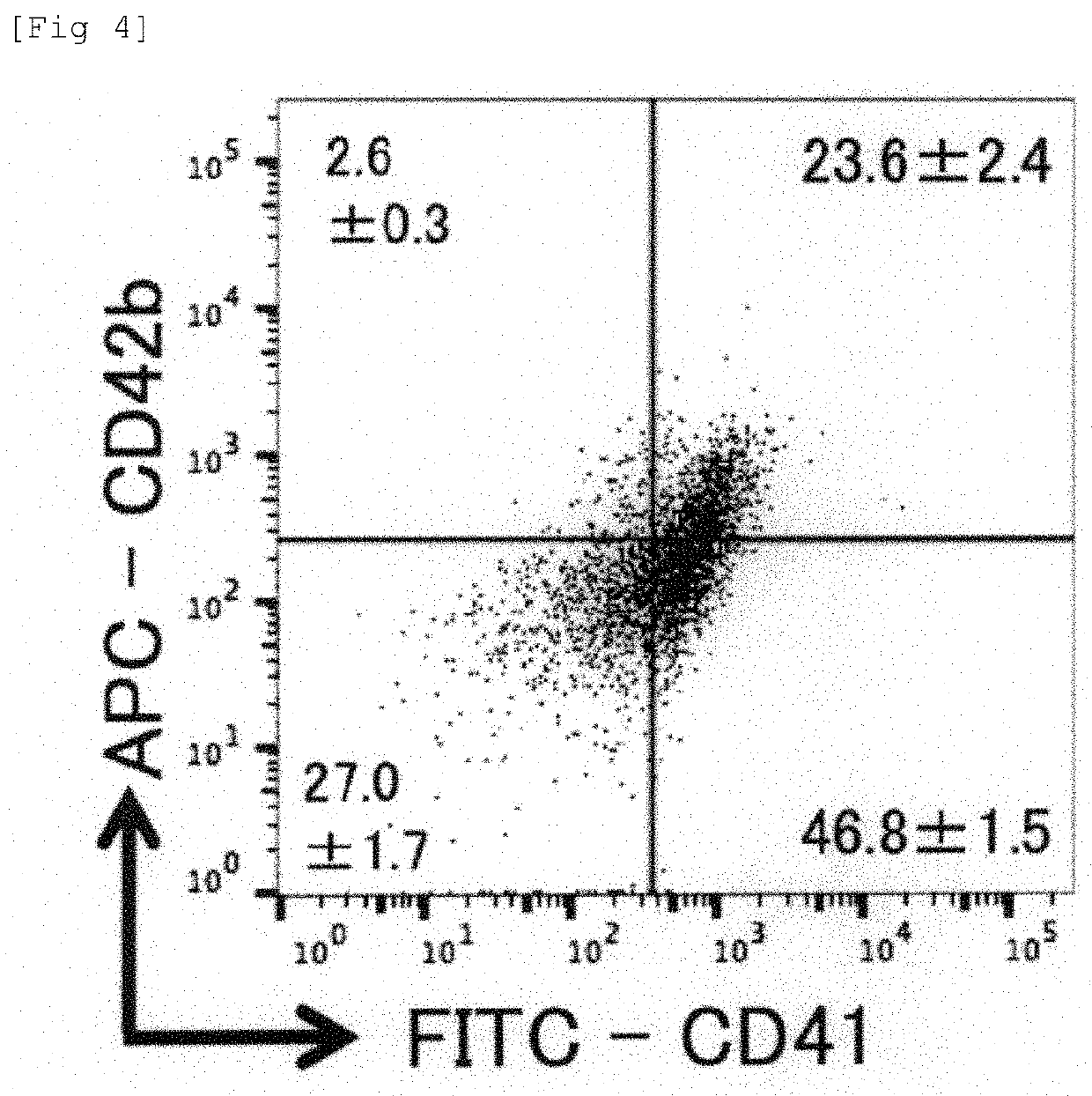Method for manufacturing mesenchymal cell line derived from vertebrate animal adipose tissue
a technology adipose tissue, which is applied in the field of mesenchymal cell line derived from vertebrate animal adipose tissue, can solve the problems of increasing unable to achieve long-term platelet preservation. , to achieve the effect of reducing the number of blood donors, shortening the time, and increasing the amoun
- Summary
- Abstract
- Description
- Claims
- Application Information
AI Technical Summary
Benefits of technology
Problems solved by technology
Method used
Image
Examples
example 1
[0074][Preparation of Mesenchymal Cell Line Derived from Adipose Tissue]
[0075]After isolating a piece of subcutaneous adipose tissue from human, collagenase (collagenase type II; manufactured by Sigma-Aldrich) was added and the tissue was incubated at 37° C. for 1 hour, thereby obtaining a cell suspension. When the cell suspension was centrifuged, the mature adipocytes having a light specific gravity floated in the supernatant and other kinds of cells precipitated as a cell pellet. The cell pellet comprised mesenchymal stem cells, adipose progenitor cells, stromal cells (stroma cells), vascular endothelial cells, smooth muscle cells, and fibroblasts. The cells in the cell pellet were used in the subsequent experiments. The cells in the above cell pellet were cultured under the conditions of 37° C. and 5% CO2 for 10 days in Adipocyte Differentiation Medium (manufactured by Cell Applications, Inc.) in a culture dish. The cultured cells comprised a large number of mature adipocytes (ea...
example 2
[0079][Induction of Differentiation of Mesenchymal Cell Line Derived from Adipose Tissue into Osteoblasts]
[0080]The mesenchymal cell line derived from a human adipose tissue obtained in the above Example 1 was cultured in osteoblast differentiation inducing medium (manufactured by Cell Applications, Inc.) in a culture dish under the conditions of 37° C. and 5% CO2 for 21 days. When the alkaline phosphatase activity of the obtained cells was confirmed by adding bromochloroindolyl phosphate / nitro blue tetrazolium, the substrate thereof, the color development of bluish purple color (but appeared as a blackish color in the drawing) was recognized (FIG. 2, right panel in the first row from the top). This verified the differentiation into osteoblasts.
[0081]Further, when the cultured cells described above were stained with Alizarin red to confirm the calcification of cells, the color development of red color (but appeared as a blackish color in the drawing) was recognized (FIG. 2, right pa...
example 3
[0084][Induction of Differentiation of Mesenchymal Cell Line Derived from Adipose Tissue into Adipocytes]
[0085]The mesenchymal cell line derived from a human adipose tissue obtained in the above Example 1 was cultured in Adipocyte Differentiation Medium (manufactured by Cell Applications, Inc.) in a culture dish under the conditions of 37° C. and 5% CO2 for 7 days. When the obtained cells were stained with oil red 0 to confirm the presence of fat globules, the color development of red color (but appeared as a blackish color in the drawing) was recognized (FIG. 2, right panel in the third row from the top). This verified the differentiation into mature adipocytes. This verified that the mesenchymal cell line derived from a vertebrate adipose tissue produced by the production method of the present invention had differentiation potency into adipocytes.
[0086]A mesenchymal cell line derived from a human adipose tissue was used in Example 3, but the present inventors confirmed that the di...
PUM
| Property | Measurement | Unit |
|---|---|---|
| temperature | aaaaa | aaaaa |
| temperature | aaaaa | aaaaa |
| compatibility | aaaaa | aaaaa |
Abstract
Description
Claims
Application Information
 Login to View More
Login to View More - R&D
- Intellectual Property
- Life Sciences
- Materials
- Tech Scout
- Unparalleled Data Quality
- Higher Quality Content
- 60% Fewer Hallucinations
Browse by: Latest US Patents, China's latest patents, Technical Efficacy Thesaurus, Application Domain, Technology Topic, Popular Technical Reports.
© 2025 PatSnap. All rights reserved.Legal|Privacy policy|Modern Slavery Act Transparency Statement|Sitemap|About US| Contact US: help@patsnap.com



